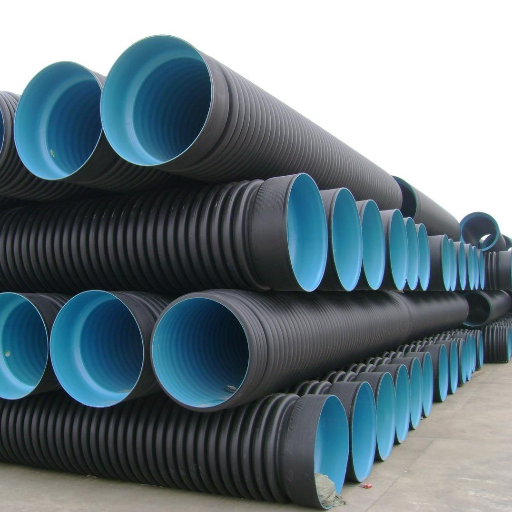When it comes to efficient, durable, and cost-effective piping solutions, HDPE double wall corrugated pipes have emerged as a game-changer in various industries. Whether used in drainage systems, sewage networks, or stormwater management, these pipes offer a host of advantages that make them a preferred choice over traditional piping materials. But what exactly sets them apart? This article explores the key benefits of HDPE double wall corrugated pipes, providing valuable insights into why they are becoming a standard in modern infrastructure projects. Stay tuned to discover why these pipes are revolutionizing the way we think about long-term and reliable piping systems.
Unique Features of HDPE Double Wall Corrugated Pipes
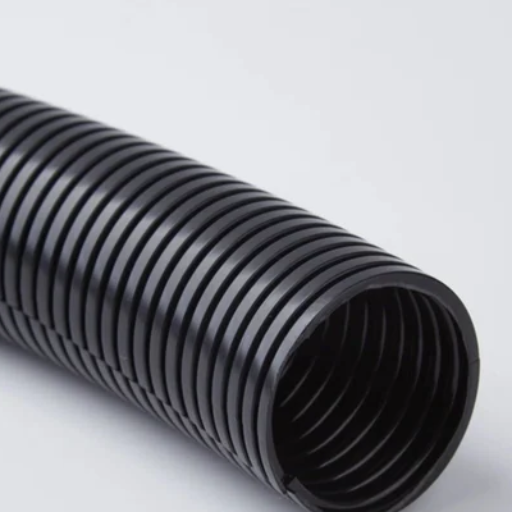
Lightweight Design
The HDPE double wall corrugated pipes have always been lighter in weight, making them one of the more cost-efficient materials for various construction and infrastructure purposes. Traditionally, concrete and metal were heavy, heavy to handle and transport. The very characteristic carries great implications: increased labor costs and the time taken to install.
In addition, the lightweight character helps in safety. Handling Galvanized heavy materials endangers workers in quite tight or tricky areas. Because of being lighter, HDPE double wall corrugated pipes reduce such risks, thus assuring a safer working environment while giving equal performance and durability.
The perfectly balanced property of lightness does not take away from the structural solidity of the pipes. Being less in weight, these pipes are very strong and durable and, therefore, well suited to face the outside pressures and harsh weather conditions. It guarantees longevity and reliable works, making the HDPE double wall corrugated pipes a cheap and durable option for many projects. A combination of practicality and resilience has made them a preferred option for huge and small applications alike.
High Durability
HDPE double-wall corrugated pipes are best known for their extreme durability. Such pipes were produced to adapt to highly coactive conditions involving extreme temperatures, high-pressure loads, corrosive atmospheres, etc. These pipes maintain their physical structure for prolonged periods due to non-reactivity against chemicals and physical wear.
The pipes are made stronger by their series construction. The outer wall contains corrugation so that the pipes can resist deformation against an external force, whereas the inner wall is very smooth so that fluids may flow without restraint. This design has. At all, two benefits: it lengthens the life of the pipes and reduces the repair costs.
Also, its HDPE double wall corrugated pipe can be specified for many applications like drainage, sewage, and industrial projects. Since these pipes are lightweight, transportation and installation are quite easy, and the pipes are still very resilient. These are the features that make them the right choice for many projects, as they provide service life, even in the harshest environments.
Resistance to Corrosion and Chemicals
HDPE double wall corrugated pipes are treated with corrosion and chemical resistance, and hence, they qualify for places where there might be an exposure to some harsh substances. However, with HDPE pipes, as opposed to conventional materials like concrete or metal, such interaction with chemicals-induced degradation of structure does not take place. Such corrosion resistance ensures their longevity in areas of high acidity or alkalinity or industrial chemicals.
Besides being rust-proof, HDPE pipes are also subjected to corrosion in metallic bodies. The deals with the attack of oxidation in such a way that it extends the lifespan of the pipes in an environment filled with moisture or corrosives. Thus, in sewage, wastewater treatment, and industrial drainage where long-term reliability is a must, the non-corrosive nature of HDPE pipes comes out to be widely useful.
With chemical and corrosive resistance, these pipes require less maintenance and very consistent performance over time. Given the high resistance to chemicals, HDPE double wall corrugated pipes remain a cost-efficient and dependable option where durability is required under challenging conditions.
Applications of HDPE Double Wall Corrugated Pipes
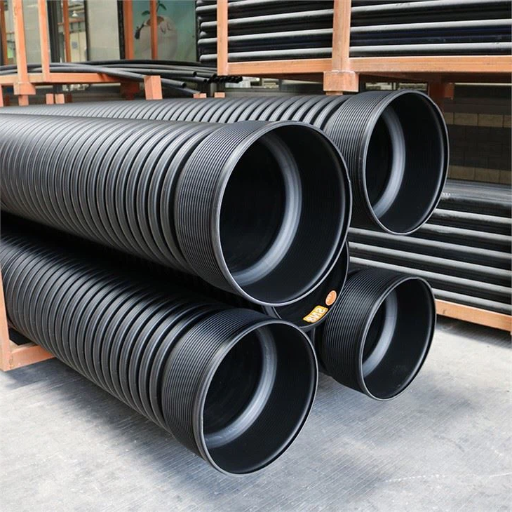
Drainage Systems
HDPE double wall corrugated pipes are most commonly employed in modern drainage systems because they meet all durability and performance criteria expected of them. These pipes are engineered to make sure that large quantities of water move through them swiftly and efficiently-a good choice for stormwater management and urban drainage infrastructure. Because of their flexibility and light weight, they are easy to handle during installation, which translates to an overall reduction in project time and costs. They stand high on endurance-withstanding abrasion and corrosion from chemicals and environmental conditions that are highly aggressive.
Featuring ultimate hydraulic efficiency is one of the many advantages of an HDPE double wall corrugated pipe for drainage. Being smooth on the inside, friction is on the negative side, thus creating a situation for speedy movement of water with a very slight chance of being clogged. This makes the pipe particularly useful in instances of heavy rainfall or flooding where water has to be drained quickly before it causes waterlogging and property damages. Apart from this, in the field of highways, railways, and big industrial drainage, it can withstand high external loads.
Environmentally sustainable basically, that is another good feature for HDPE double wall corrugated pipes. These pipes vary from other types mainly because they can be recycled; second, they keep the production and transportation carbon footprints low since HDPE pipes are lightweight. When put together with contemporary construction methods, these pipes will be the optimum answer to drainage difficulties of the present day while availing themselves towards the conservation of the environment. These properties give HDPE double wall corrugated pipes the preference of engineers and designers when they are planning for drainage systems that are efficient, economical, and environmentally friendly.
Sewage Infrastructure
In other words, it means sewage infrastructure serves as an essential part of urban development, ensuring public health and unattended wastewater disposal. Modern and technically advanced systems implement materials, plus innovative engineering, to ensure long-lasting and sustainable solutions. With the use of HDPE double wall corrugated pipes, engineering systems theoretically create strong sewage systems because these pipes are resistant to chemical corrosion and capable of carrying heavy waste loads. These pipes are generally known for their high flexibility and compressive strength, characters necessary for installing in both urban and rural sewage systems.
So, these HDPE pipes really promote environmental sustainability in sewage systems. PE pipes have generally been considered more environmentally friendly compared to those made of materials such as metal or concrete, as they are recyclable and have the least amount of carbon emissions during their manufacture and onward supply. Another advantage is that they function very efficiently due to their smoothly finished inner surface, resisting blockages and liquefying wastewater, thereby necessitating fewer repairs and maintenance. This save costs and ensures that wastewater management processes are rarely interrupted, which is very critical in growing cities where demands keep increasing.
Digital technologies are exploited into modern sewage systems for monitoring and maintenance purposes. Pipelines with embedded sensors and automated controls are being developed and installed so as to function in real-time-tracking flow rates, pressure level, and possible leakages. With all the strength endowed by HDPE double wall corrugated pipes, the new hybrid systems seek to detect and stop failures before they can morph into compound issues. By uniting such state-of-the-art materials with smart technology, our sewage infrastructure is evolving to become a reliable and sustainable solution in handling town and industrial wastewater.
Industrial Settings
The high-density polyethylene double wall corrugated pipes became efficient industrial areas due to the durability, high resistance to chemical reactions, and greater lifetime. Usually being employed in chemical, pharmaceutical, and food industries, the waste disposal, and liquid transportation require very strict standards. Due to such properties as corrosion resistance, their ability to maintain liquid temperatures either high or low to an operator, these pipes play a great role in the average transfer capabilities of hazardous and nonhazardous liquids on both efficient grounds.
Having been combined with modern monitoring systems and automation mechanisms, the pipes deliver better operational performance. For example, smart sensors can be installed to monitor flow rates, temperature, and pressure in real-time to ensure that safety regulations are honored while performance is optimized. From this perspective, the technology decreases the downtime of industrial operations, lowers maintenance costs, and avoids catastrophic failure.
Independent studies and case reports showed how industries with the use of HDPE double wall corrugated pipes had registered a decrease in overall maintenance costs by the margin of 25%. Basically, this is because of the protective nature of the pipes coupled with the use of data-driven maintenance programs, powered through integrated monitoring systems. Through the use of such advanced measures, industries are creating a greener future while at the same time fortifying operational reliability within a highly demanding environment.
Benefits of Using HDPE Double Wall Corrugated Pipes
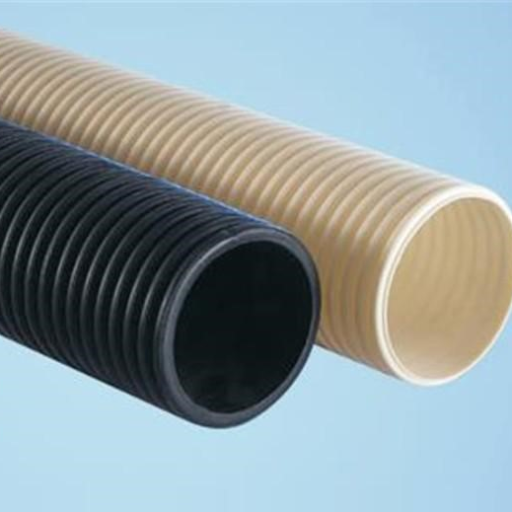
Enhanced Efficiency
Installation and operation are by far less efficient for HDPE Double Wall Corrugated Pipes. Their lightweight nature assists in very easy and quick handling during installation, saving a lot of time and labor, unlike traditional pipe materials, such as concrete or metals. The flexible design allows the HDPE pipes to withstand shifting of the earth and accommodate such motion without cracking or breaking, thus ensuring long-term serviceability in really harsh environments.
With respect to drainage, sewage, and irrigation systems, these pipes with a smooth interior surface contribute in great measure to hydraulic efficiency. Because of a very low coefficient of friction, HDPE pipes afford greater flow rates and are virtually free of blockages. This helps to achieve maximum transfer efficiency while reducing the energy consumed by pumping setups, making the pipes more cost-efficient.
Combine it with advanced monitoring and data-driven maintenance programs to enhance the efficiency of HDPE Double Wall Corrugated Pipes even farther. These systems provide real-time insights into performance and potential issues, selecting only the best downtime maintenance options. As operational workflows are enhanced, organizations get huge cost savings over time with the added advantage of sustainable and green infrastructure options.
Reduced Maintenance Costs
In my experience, an important benefit of HDPE Double Wall Corrugated Pipes is the reduction in maintenance costs. Made to overcome traditional materials, they can stand up to harsh treatment and resist corrosion, thereby blocking less with time. Hence, the need to maintain these pipes is infrequently needed, opposed to replacing them, thus serving the purpose of any construction works.
From another angle, the installation of the pipe coupled with an advanced monitoring system will allow operators to track their performance in real-time. This signifies the ability to notice and tackle concerns early on, such as leaks or buildups, preventing lengthy downtime or costly repairs. These are measures of preventative maintenance, which will ensure the prompt correction of operational bottlenecks, saving much time and resources.
On a more general note, HDPE pipe cost-effectiveness goes hand in hand with sustainability targets. Very minimal maintenance requirements allow for reduced operating expenses and an also smaller carbon footprint from excessive repairs or wastage of materials. In pursuance of an infrastructure that is dependable and green, these pipes strike a perfect balance between efficiency and savings.
Long-Term Performance
HDPE pipes have long been considered long-lasting due to their fine durability. With a lifespan expectancy beyond 50 years under normal operating conditions, HDPE pipes resist corrosion, chemical degradation, and environmental stresses-potent extremes of temperature and ground movement. This capacity for long-century performance keeps them freed from frequent repair or even replacements.
The studies confirm that HDPE pipes maintain their integrity under pressure and other challenging environments. Where ground shifts cause failure with rigid materials, HDPE pipes’ flexibility and robustness prevent failure. Such reliability and maintenance-free characteristics assure substantial cost savings over the complete system lifecycle.
Now, the uses of HDPE are increased by the new transitions of research, such as advanced material formulation and jointing. Maybe if installed correctly, the innovation guarantees safe installation that minimizes the possibilities of leakage or failure, which thereby reaffirms the position of HDPE’s being sustainable and dependable for long-term usage.
Comparison with Other Piping Materials
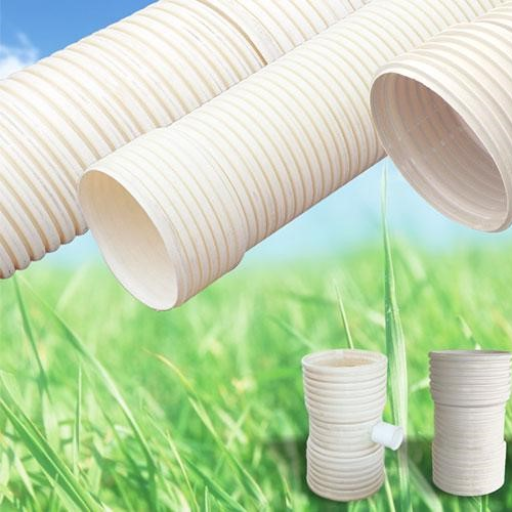
HDPE vs. PVC Pipes
HDPE pipes are versatile, yet determinedly flexible. They can withstand UV rays shining atop them. On the other hand, PVC pipes are harder and stiffer and would be more cost-effective with static applications.
|
Aspect |
HDPE |
PVC |
Key Notes |
|---|---|---|---|
|
Flexibility |
High |
Low |
HDPE bends easily |
|
Rigidity |
Moderate |
High |
PVC is stiffer |
|
Sunlight Tolerance |
Excellent |
Poor |
HDPE resists UV damage |
|
Longevity |
High |
Moderate |
HDPE lasts longer |
|
Initial Cost |
Higher |
Lower |
PVC is cheaper initially |
|
Joining Method |
Heat fusion |
Bell & spigot |
HDPE joints are seamless |
|
Pressure Handling |
High dynamic |
High static |
HDPE handles surges |
|
Temperature Suitability |
-40°F to 140°F |
Limited |
HDPE suits extremes |
|
Chemical Compatibility |
High |
Moderate |
HDPE resists chemicals |
|
Eco-Friendliness |
High |
Moderate |
HDPE is eco-friendly |
HDPE vs. Concrete Pipes
HDPE pipes focus on being lightweight, flexibility, and corrosion resistance, whereas concrete pipes are rigid with inert properties and rely on structural strength for their functionality.
|
Aspect |
HDPE |
Concrete |
Key Notes |
|---|---|---|---|
|
Weight |
Lightweight |
Heavy |
HDPE is easier to handle |
|
Flexibility |
High |
Low |
HDPE bends, concrete is rigid |
|
Strength |
Relies on soil |
Structural |
Concrete has inherent strength |
|
Corrosion |
Resistant |
Prone |
HDPE resists corrosion |
|
Installation |
Easy |
Complex |
HDPE is faster to install |
|
Lifespan |
100+ years |
50+ years |
HDPE lasts longer |
|
Cost |
Lower transport |
Higher transport |
Concrete is costlier to ship |
|
Leakage |
None |
Possible |
HDPE joints are leak-proof |
|
Environmental |
Sustainable |
Moderate |
HDPE has lower energy needs |
|
Applications |
Versatile |
Limited |
HDPE suits more scenarios |
HDPE vs. Metal Pipes
HDPE pipes are lightweight, corrosion-resistant, flexible, and best applicable under low pressure. Metal pipes, on the other hand, are powerful, rigid, and low-pressure relations with being application.
|
Aspect |
HDPE |
Metal |
Key Notes |
|---|---|---|---|
|
Weight |
Lightweight |
Heavy |
HDPE is easier to handle |
|
Flexibility |
High |
Low |
HDPE adapts to ground shifts |
|
Strength |
Moderate |
High |
Metal handles high pressure |
|
Corrosion |
Resistant |
Prone |
HDPE resists rust |
|
Installation |
Easy |
Complex |
HDPE requires less labor |
|
Lifespan |
50-100 years |
20-50 years |
HDPE lasts longer |
|
Cost |
Lower transport |
Higher transport |
Metal is costlier to ship |
|
Environmental |
Sustainable |
Moderate |
HDPE is recyclable |
|
Applications |
Versatile |
Specialized |
Metal suits extreme conditions |
Best Practices for Selecting and Installing HDPE Double Wall Corrugated Pipes
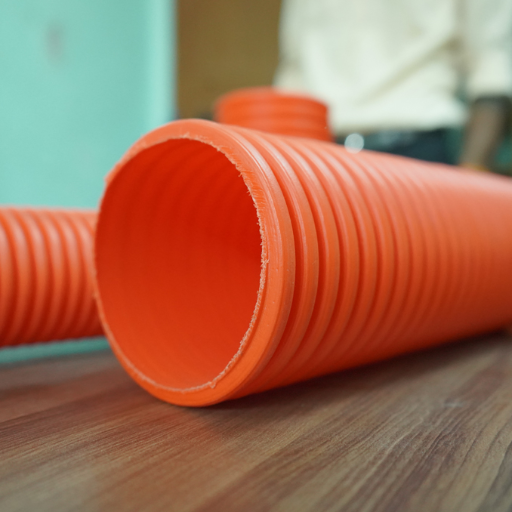
Factors to Consider for Selection
Depending on the HDPE double wall corrugated pipes chosen for the job, there are certain considerations that must be addressed to make the best selection. The project requirements should be studied, considering the kind of fluid to be conveyed, load bearing capacity, and environmental conditions. Consequently, HDPE pipes are very versatile and able to adapt to many scenarios.
- Durability and Service Life: This makes HDPE highly durable, with the service life having crossed 100 years. Resistance to corrosion, chemicals, and abrasives makes it conducive to working in harsh environments, thus cutting down on long-term maintenance.
- Ease and Speed of Installation: Being HDPE pipes, they are lighter and easier to handle than alternatives like metal or concrete pipes, culminating in faster and cheaper installations.
- Transportation Costs: Again, the lightweight design means that long-distance transportation of HDPE pipes would generally be cheaper, especially when large quantities are involved.
- Leak Protection: Some joining techniques applicable to HDPE pipes such as heat fusion provide a leak-proof system with a lesser chance of fluid loss and contamination.
- Environmental Impact: HDPE pipes require lesser energy to be produced and are recyclable, thus supporting sustainable construction as is her goal in environmentalism today.
Taking all of these into consideration will make sure stakeholders know how HDPE double wall corrugated pipes fit entirely with project objectives pertaining to performance, cost-efficiency, and sustainability.
Proper Installation Techniques
To ensure maximum performance and avoid premature wear, a good installation of HDPE double wall corrugated pipes is of utmost importance. The work starts with trench preparation, wherein adequate excavation shall be made for both the pipe and the bedding. The bedding materials generally consist of granular soils, and all materials containing sharp objects shall not be used to prevent damage to the pipe wall. Proper compaction of the bedding is necessary, so the bedding serves as stable support.
HDPE pipe joining must be done with care so that the entire piping system is rendered leak-proof. Joining can be done using push-fit joints or electrofusion welding, both of which yield a very tight connection. Visual inspection of previous damage to the pipe should be done before installation, along with following manufacturer’s instructions regarding proper alignment and positioning.
Backfilling works in conjunction with an appropriate type of filler to safeguard the pipe, keeping it reasonably flexible for slight movements of the ground. Keeping an eye on pipe alignment during the backfilling procedure would have prevented misalignment.
Quality control and periodic inspection play a great role in durability assurance. More credibility is added to long-term applications by following industry standards such as ASTM or ISO certifications. Training personnel involved in installation is highly recommended to avoid errors and maintain quality for the project.
Maintenance Practices for Optimal Performance
In order to guarantee the best applicable system performance under the highest standard of longevity, routine maintenance should be scheduled for the system. Piping components like joints, fittings, and support systems have to be periodically checked for problems caused by corrosion, leaks, or mechanical failures before such issues can aggravate them further. Cleaning internal surfaces to eliminate deposits and sediment is another task, especially for systems where water or chemicals are handled, as these deposits can interfere with smooth efflux and raise pressure inside.
Meanwhile, the use of advanced diagnostic tools, such as ultrasonic testing, infrared thermography, or vibration analysis, can further provide accurate non-invasive assessments of system integrity. Monitoring records of maintenance activities and system performance metrics also allow operators in spotting recurring patterns in system failures to implement predictive measures instead of reactive alterations.
Lastly, this increases the reliability with automated process-control systems or IoT sensors delivering measurements in real time regarding the operating conditions such as pressure, temperature, and flow rates. This kind of proactive maintenance combined with advanced technology means less downtime and constant performance at the highest level.
References
Frequently Asked Questions (FAQ)
Q: What are the advantages of HDPE double wall corrugated pipes?
A: HDPE double wall corrugated pipes offer numerous advantages, including enhanced structural strength, high impact resistance, and resistance to corrosion. Their design minimizes friction, making them suitable for various applications such as drainage systems and wastewater management. Additionally, they are lightweight and easy to install, which reduces time and labor costs during the installation process.
Q: How does the smooth inner wall of HDPE pipes benefit performance?
A: The smooth inner wall of HDPE double wall corrugated pipes significantly reduces friction, allowing for efficient fluid conveyance. This feature helps prevent water infiltration and ensures a reliable flow in drainage and sewage systems. Furthermore, the smooth surface minimizes the risk of blockages and enhances the overall lifespan of the piping system.
Q: Are HDPE double wall pipes environmentally friendly?
A: Yes, HDPE double wall pipes are made of high-density polyethylene, a non-toxic and recyclable material. Their durability and long service life reduce the need for frequent replacements, making them an environmentally sustainable choice for modern construction projects. Additionally, they can withstand a wide range of chemicals, further contributing to their eco-friendliness.
Q: What makes HDPE double wall corrugated pipes a preferred choice for demanding applications?
A: The unique design and added layer of protection of HDPE double wall corrugated pipes make them ideal for demanding applications. Their high impact resistance and ability to withstand harsh environmental conditions ensure safety and reliability in various settings. These pipes are widely used in irrigation, gas piping, and industrial wastewater management due to their adaptability and long-term durability.
Q: How do HDPE pipes compare with other types of pipes?
A: Compared with other pipes, such as PVC or traditional plastic pipes, HDPE double wall corrugated pipes offer superior impact resistance, durability, and corrosion resistance. Their lightweight nature makes them easier to handle and install, while their long service life reduces overall costs associated with maintenance and replacements.
Q: What is the installation process for HDPE double wall corrugated pipes?
A: The installation process for HDPE double wall corrugated pipes is straightforward due to their lightweight design and easy installation features. They can be connected using electrofusion or other methods, ensuring a secure fit. Proper planning and adherence to best practices are essential for maximizing their performance and longevity in various applications.
Q: Can HDPE double wall corrugated pipes handle high-pressure applications?
A: Yes, HDPE double wall corrugated pipes are designed to handle high-pressure applications effectively. Their structural strength and resistance to deformation make them suitable for a wide range of pressures, ensuring reliable performance in both drainage and water supply systems.
Q: What are the long-term benefits of using HDPE double wall corrugated pipes?
A: The long-term benefits of using HDPE double wall corrugated pipes include their durability, low maintenance requirements, and reduced risk of leakage. Their ability to withstand various environmental factors ensures that they remain functional over time, making them a cost-effective solution for infrastructure projects.
Q: How do HDPE double wall pipes contribute to safety and reliability?
A: HDPE double wall pipes contribute to safety and reliability through their robust construction that resists corrosion and impacts. They are designed to handle ground movements and harsh environmental conditions, ensuring that they perform consistently and safely throughout their service life. This makes them a trusted choice for critical applications in drainage and sewage systems.



